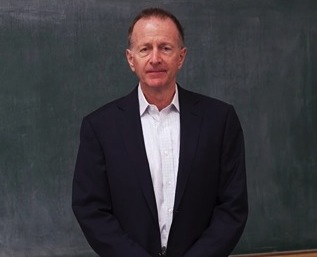Wave Wire Services
LOS ANGELES — A new school year in the Los Angeles Unified School District officially started Aug. 17 amidst a pandemic that has forced the district to transition to distance learning in virtual classrooms as campuses remain closed and offer COVID-19 testing and contact tracing for students and staff.
“We all wish students could be headed back to classrooms as a new school year officially starts,” Superintendent Austin Beutner said. “Unfortunately, it’s not safe and appropriate at this time. As we start the new school year online, each and every one of us in Los Angeles Unified will do our best to help students continue to learn.”
The school year started with teacher training. Students are expected to attend mandatory orientation sessions Aug. 18 and 19, with the first actual day of instruction Aug. 20.
The distance-learning work plan for the 2020-21 school year was created by bringing together students and families, teachers and staff, school leaders, labor partners and community organizations that met with health experts, reviewed ideas from other school districts and coordinated with state and local health and education authorities.
“The goal is to have as much teacher-led interaction with students as possible,” Beutner said, noting that revamped distance learning — mostly online — “will have more structure and standards and increased interaction between teachers and students.”
Devices, textbooks and internet access are being provided to families in need, and a Family Helpdesk hotline and Family and Student Handbook are designed to help navigate online learning. A mental health hotline is also accepting calls.
Schools will provide one-on-one support both in person and online, for students who need it most, he said. A Step Up Tutoring program will utilize volunteers from across the country — screened individuals who are trained students or college graduates to provide students with their assistance outside of the regular school day.
“Distance-learning is not ideal, but it is a temporary and necessary solution to making sure we do what we can to keep our school communities healthy and safe,” said Cecily Myart-Cruz, president of United Teachers Los Angeles union.
“As this new school year begins, we are missing the hugs, the laughter, the fist-bumps, and seeing the smiles in our classrooms or waves from across the playground and cafeteria as we continue to improve our school and classroom environment through remote classroom and distance-learning,” she said.
Last week, Board of Education members conceded the distance-learning plans aren’t perfect, but they marked an improvement over the online learning that was implemented on the fly in March when the pandemic erupted.
Board member George McKenna said he has “no illusions the students will be as well-served … with distance-learning as they would be if they could actually be in a classroom with a teacher.”
He added, “All we can do is try to keep our children safe and as well-educated as we can.”
Distance-learning plans for the fall semester include an average school day from 9 a.m. to 2:15 p.m.; targeted small group instruction; opportunities for small group and independent student work; social emotional support for students; instructional training; flexibility for teachers to work on campus or from home; office hours for students and families to connect with teachers; and more. Daily attendance will be taken.
Teachers and others staff members who might be on campus will be provided with child care, and campuses are being cleaned and supplied with personal protective equipment for those workers and their children — practices that will continue once all students are eventually able to come back to the classroom on a full-time or hybrid basis.
Those workers and their children who are on campus will be tested regularly for coronavirus.
“On an ongoing basis, sample testing based on epidemiological models will be done for each cohort of staff and students,” Beutner said. “Testing will also be provided to family members of students and staff who test positive for the virus and family members who show symptoms.
“This will help get students back to school as soon as possible while protecting the health and safety of all in the school community,” he explained, noting that a recent survey of employees found “88% felt a robust system of testing and contact tracing at schools would make them safer.”
Beutner called the testing and tracing effort “extraordinary actions” spurred by “extraordinary circumstances,” and he said “while this testing and contact tracing effort is unprecedented, it is necessary and appropriate. This program will provide public health benefit to all in the school community as well as the greater Los Angeles area. It will also provide significant education benefits for students as it will get them back to school sooner and safer and keep them there.”
District officials have not said when all students might be able to return to schools.
“This is an enormous undertaking for schools, as well as for the students and families they serve,” Beutner has said. “There will be questions and, as we’ve seen since March, circumstances can change quickly. We’ll do our best to keep everyone informed with regular town hall and school meetings, as well as ongoing surveys and focus groups to make sure we’re learning about concerns and continuing to address them.”
Beutner emphasized that the new school year is an opportunity for students to continue to learn, even though it will require a different approach and extraordinary effort.
“While the doors to classrooms will not be open … it’s our goal to provide the best education possible for students so they continue to have the same opportunity,” he said. “Thanks for your continued patience and support.”
The district’s 63 Grab & Go Food Centers, which have provided more than 53 million meals, will remain open this fall semester from 8 to 11 a.m. weekdays.












